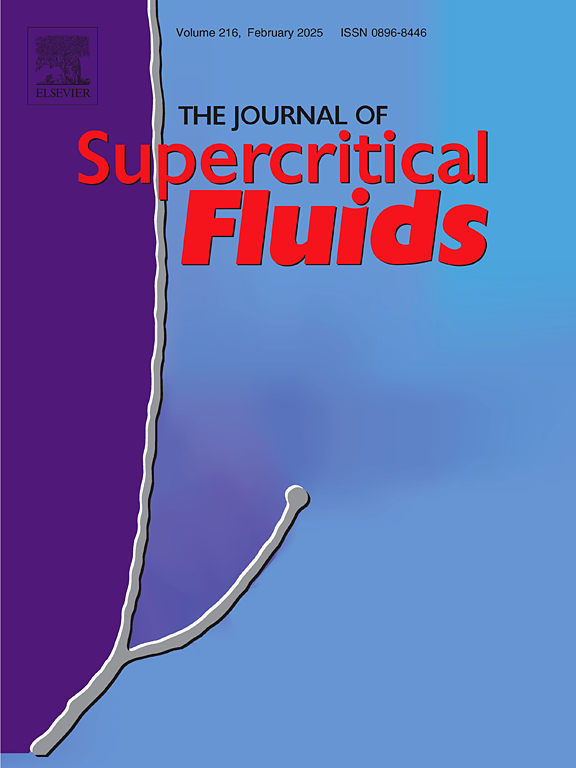半连续水热废物增值:从聚双酚A碳酸酯中回收单体的简易方案
IF 4.4
3区 工程技术
Q2 CHEMISTRY, PHYSICAL
引用次数: 0
摘要
本研究介绍了一种新型的半连续水热法化学回收聚双酚a碳酸酯(PC),重点是双酚a (BPA)的选择性裂解,同时最大限度地减少其分解。通过利用现有的动力学和相平衡数据进行计算,确定了关键操作参数和反应器设计,确保BPA停留时间保持在可接受的范围内。该设计具有连续去除BPA的特点,以防止二次分解。利用停留时间分布和数学反褶积分析了系统的流态。在温度为300 °C,压力为10 MPa,分解时间为70 min的条件下,该工艺在平均水停留时间约为1 分钟内获得了95 %的BPA收率。通过色谱、核磁共振光谱和热分析证实了BPA的高纯度。研究结果支持了PC水解的准固体动力学行为,并为PC的化学回收建立了一条可持续、高效的途径。本文章由计算机程序翻译,如有差异,请以英文原文为准。
Semi-continuous hydrothermal waste valorization: Facile protocol for monomer recovery from poly(bisphenol A carbonate)
This study introduces a novel semi-continuous hydrothermal process for the chemical recycling of poly(bisphenol A carbonate) (PC), focusing on the selective cleavage of bisphenol A (BPA) while minimizing its decomposition. Key operational parameters and reactor design were established through calculations using available kinetic and phase equilibrium data, ensuring that BPA residence time remained within acceptable limits. The design features continuous BPA removal to prevent secondary decomposition. Flow patterns of the system were analyzed using residence time distribution and mathematical deconvolution. At a temperature of 300 °C, pressure of 10 MPa, and a decomposition time of 70 min, the process achieved a 95 % yield of BPA within an average water residence time of approximately 1 minute. High purity of BPA was confirmed through chromatography, NMR spectroscopy, and thermal analysis. The results support a pseudo-solid kinetic behavior for PC hydrolysis, besides establishing a sustainable and efficient pathway for chemical recycling of PC.
求助全文
通过发布文献求助,成功后即可免费获取论文全文。
去求助
来源期刊

Journal of Supercritical Fluids
工程技术-工程:化工
CiteScore
7.60
自引率
10.30%
发文量
236
审稿时长
56 days
期刊介绍:
The Journal of Supercritical Fluids is an international journal devoted to the fundamental and applied aspects of supercritical fluids and processes. Its aim is to provide a focused platform for academic and industrial researchers to report their findings and to have ready access to the advances in this rapidly growing field. Its coverage is multidisciplinary and includes both basic and applied topics.
Thermodynamics and phase equilibria, reaction kinetics and rate processes, thermal and transport properties, and all topics related to processing such as separations (extraction, fractionation, purification, chromatography) nucleation and impregnation are within the scope. Accounts of specific engineering applications such as those encountered in food, fuel, natural products, minerals, pharmaceuticals and polymer industries are included. Topics related to high pressure equipment design, analytical techniques, sensors, and process control methodologies are also within the scope of the journal.
 求助内容:
求助内容: 应助结果提醒方式:
应助结果提醒方式:


